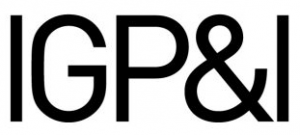In recent years, Gard has seen a steady increase in dry cargo shortage claims in Vietnam. Our data reveal that cargo claims in ports such as Cai Mep and Phu My have nearly tripled from 2020 to 2024. This article outlines the factual and legal background and gives advice on how to avoid or defend shortage claims in the best way.

Mitigating dry cargo shortage claims in Vietnam
Written by

Ntina Angelopoulou
Claims Executive, Lawyer

Dimitris Tsordas
Claims Executive
Published 08 May 2025
These claims encompass various types of cargo, including soybean meal, corn and fertilizers. Although they typically don’t involve very high exposure, their frequency underscores the need to share the knowledge and advice on the topic.
Why do shortage claims happen?
The primary reason for shortage claims is twofold:
Multiple Bills of Lading for bulk cargoes. In many cases, multiple bills of lading are issued to different receivers for parts of a bulk cargo. These cargoes may vary in type. In these cases, owners or carriers can be held liable—under the terms of each bill—for the total quantity delivered to each receiver. The more bills of lading are issued in respect of a bulk cargo, the more likely are individual, often smaller-scale, cargo claims, as receivers tend to assess shortfalls against their specific consignment, irrespective of the total quantity discharged.
Discharge into barges and transfer to warehouses. It is common practice in Vietnam for cargoes to be discharged into multiple barges before being transferred to shore-based warehouses. This process increases the risk of cargo claims, particularly since it is not always feasible to conduct accurate draft surveys on the barges. Furthermore, the discharge operations may take place simultaneously or sequentially, depending on operational logistics. This makes it harder to accurately match cargo quantities to each receiver, especially when dealing with multiple bills of lading. Still, the liability of the carrier would normally cease upon the cargo’s passing the ship’s rail. Therefore, the distribution to the various receivers would be outside the carrier’s control and responsibility.
Draft surveys
Shipowners commonly conduct draft surveys of carried cargo at both the loading and discharge port. An independent surveyor’s assessment at the loading port serves as evidence that the entire quantity of cargo was loaded. Coupled with an independent draft survey at the discharge port, this provides robust evidence against any shortage claims. Therefore, Members are encouraged to arrange draft surveys in both loading and discharge ports.
The accuracy of a draft survey depends upon meticulous measurements and strict adherence to standardized procedures. Even small mistakes can impact the final figures. Common issues include misreading the draft marks, errors in hydrometer measurements (often due to sea swelling and weather conditions), and incorrect ballast water measurements. Human error also plays an important role.
Shipowners and crew should expect the local cargo surveyors to follow the UN ECE Guidelines during the draft survey. To support this, vessels should be properly prepared. This includes ensuring that:
Draught marks are clear and easy to read
Sounding pipes are clear and free from blocking elements, and
The hydrostatic table is available on board with proper class society endorsement.
Vietnamese law does not prioritize one survey report over another, as long as they are conducted by competent surveyors in compliance with the above standards. Therefore, if both owners and charterers appoint surveyors, the owners’ position will be strengthened against any potential shortage recorded based on the receivers’ draft. Similarly, it is crucial that the vessel’s draft surveys are signed by all attending surveyors, to prevent disputes over which assessment takes precedence.
In the event the vessel’s draft survey figures are not in line with the Receivers’ figures, the Master is advised to sign the latter for receipt only and without admission of any responsibility, and also add the vessel’s figures as per the vessel’s draft survey.
Intermediate draft surveys
Intermediate draft surveys will allow parties to know the exact quantity of cargo discharged per grade. They are conducted where different grades of cargo are loaded, or where discharge will take place at multiple ports, anchorages or berths. Such evidence could assist Members' position in rejecting a claim on the basis that the vessel has discharged the whole quantity of the cargo, and the cause of any shortage is not due to Members’ responsibility.
As a general rule, in Vietnam, it is possible and recommended that Members take part in such surveys. In addition to the above, participating in intermediate draft surveys is a tool that enables the Member to monitor and record the conduct of the receivers.
Trade allowance
Bulk cargo is subject to natural shrinkage and moisture evaporation, leading to weight loss. While international shipping practices recognize trade allowances for such shortages, Vietnamese law has no clear provisions on this matter. Trade allowances are only recognized if stipulated in the contract of carriage, the charterparty or other documents and if such incorporation is deemed acceptable. Parties may rely on deductible figures under the cargo insurance contract to argue for shortage allowances.
In practice, when a ship is arrested in Vietnam, cargo interests often claim the full amount of alleged shortage or damage without applying the widely recognized 0.5% trade allowance or their own insurance deductible, using the arrest as leverage to pressure shipowners into settlement. However, in cases where no arrest is made, it is common for cargo interests to automatically deduct the insurance deductible from their claim before the submission. The club’s appointed lawyers regularly challenge such claims by insisting on additional reductions for trade allowances in line with standard shipping practices before entering negotiations, highlighting the need for shipowners and P&I clubs to be vigilant against inflated claims, especially in arrest situations.
Letters of undertaking
Historically, Vietnamese cargo receivers and underwriters have rarely accepted letters of undertaking from the club to allow the vessel’s departure. That said, the club has recently witnessed cases, typically with moderate quanta, where claimants may be more amenable to accept an LOU. Thus, the club recommends that efforts are made to persuade local claimants to accept an LOU, in cooperation with the club’s local correspondent.
Legal background
Turning to the legal framework, the article will look at how Vietnam applies international carriers’ liability regimes in national law, the defences arising therefrom, as well as the enforcement of the Vietnamese Maritime Code.
Applicable law and jurisdiction
The relationship among carriers, shippers, and consignees/receivers is governed by the contract of carriage, which is typically evidenced by the bill of lading, sea waybill, or other transport documents. The terms and conditions of the contract, including the applicable law and jurisdiction, are often incorporated into these documents. Nonetheless, it is not uncommon that Vietnamese courts do not apply the contractually agreed terms.
The national legislation dealing with matters such as shortage claims is the Maritime Code of Vietnam. However, unlike Article 2(1) of the UK COGSA 1992, this Code does not provide clear rules on the rights of a bill of lading holder or the transfer of the right of suits from a charterparty to an incorporated bill of lading. According to Article 3.4 of the Maritime Code of Vietnam, the law of the country where the cargo is discharged governs the contract in case of conflict of law.
Consequently, even in cases where the bill of lading has a clause referring disputes to foreign courts, Vietnamese courts may still take the case in the event of a conflict. However, if the ship has not been arrested, cargo interests will often accept to negotiate a claim in consideration of the law applied in the contract.
Similarly, concerning the jurisdiction matter, the Member could shield themselves with the terms and conditions of the bill of lading or the charterparty. According to Vietnamese law, if there's a valid arbitration agreement, the court must dismiss the case. If not, the court can move forward. The club’s recommendation is therefore to always insert, if possible, a valid arbitration agreement on the bill of lading for trades to Vietnam.
Application of the Hague-Visby Rules
The Hague-Visby Rules have been partly incorporated in the Maritime Code of Vietnam. The latter incorporates the exonerations of the rules, such as perils of the sea, act of god, inherent vice etc., as well as the weight and package limitation. At the same time, the due diligence obligations of the carrier making the vessel seaworthy prior and at the beginning of the voyage have also been incorporated.
Lastly, the Hamburg Rules only apply if the claim is about delay, not damage to the cargo.
Arresting a vessel in Vietnam
Under the Maritime Code of Vietnam, shortage and damage claims are classified as maritime claims. This allows the cargo interests to arrest ships as security. In practice, for low value claims, Members face the need to settle disputes quickly, and thus avoid costly delays caused by the arrest. This puts claimants in a very strong position to force settlements, irrespective of the merits of a case.
In addition, when the contractual carrier cannot be identified or the name of the carrier has been falsely or inaccurately stated on the bill of lading, the code provides that the shipowner shall be presumed as carrier and thus will be held liable in case of a shortage. Subsequently, their vessel can be arrested, a danger that puts further pressure to the club’s Members that are trading in Vietnam. To avoid this, the club advises to clearly name the contractual carrier on the bill of lading if the Member is not meant to be the carrier.
Time bars
Under Vietnamese law, the deadline for filing a claim is a complicated matter. The applicable time bar depends on how the claimants structure their claim and on the court’s view of each case. The time bar will be assessed depending on the nature of each case, according to the judge’s view, as well as the claimant’s arguments.
Where a claim arises under a bill of lading, in relation to shortage/damage, a 1-year time bar shall apply from the date when the cargo was discharged or should have been delivered to the consignee. Where a claim arises from the voyage charterparty performance,a 2-year time bar shall apply from the date the claimants knew or should have known that their rights/interests are infringed. If the claim is related to a logistics service contract, the 9-month statute of limitations, which is calculated from the date of delivery of cargo, may be considered to exempt the logistics service providers from liability for the cargo claim.
Apart from the above, Vietnamese law allows the judge to apply the 3-year time bar for claims in tort, calculated from the date when the claimant knows or should have known that their lawful rights and interests were infringed. Claimants may try their best to persuade the judge to apply the head of claim that suits them most. A particularly difficult point to prove is the time when claimants knew that their lawful rights and interests were infringed. Recent case law in Vietnam has indicated that such time bar calculations are determined by the ruling forum on a case by case basis so the applicable time bar that will be applied is far from clear.
With respect to recovery claims under the Inter-Club Agreement, the club recommends that the owners/carriers put their charterers on ICA notice immediately, to make sure the ICA’s 2-year time bar notification is met.
Effect of the remark “quantity, weight, quality unknown”
In Vietnamese law and practice, such clauses do not fare well since the Vietnam Maritime Code provides that the bill of lading is a document of carriage evidencing the carrier’s receipt of cargo in quantity, type and status as stated in the B/L for carriage to place of discharge. This means the cargo description, including the quantity, is binding on the carrier.
There is one possible exception to this: If the charterparty provides for another jurisdiction (for example English law and jurisdiction), the bill of lading has been issued under that charterparty and the charterparty is clearly identified in the bill. In that case, it may be argued that the parties have agreed to the jurisdiction specified in the charterparty. Whether such an argument will succeed will depend on the judge.
The situation may be different when international recovery agents have been engaged to settle the claim on behalf of the cargo interests. In that respect, the clause may be invoked, as a contractual defence under English law.
In cases where the Bill of Lading contains the remark said to weight or the like, it can be argued that the carrier relied on shipper’s figures. This, in conjunction with other evidence, like a sealing/unsealing certificate, may assist in exonerating the carrier’s liability for shortages at the discharge port. Each case will be handled in an ad hoc basis, and the amount and quality of evidence will play a decisive role.
Exemption of the carrier
The Vietnamese Maritime Code exempts the carrier from liability for cargo loss or damage, if caused by factors beyond the carrier’s control and without their fault or intention. However, proving such exemptions is challenging. The factual circumstances of a claim will always need to be considered. As an example, the local lawyers provided a case where the discharging operations had been carried out by the consignee’s stevedores, and the carrier successfully defended that the shortage occurred for reasons beyond the latter’s control, as the responsibility for such operations had been transferred to the local stevedores.
Additional considerations
Further to the above, the club would suggest the following to Members:
Collecting Records of Receipt of Cargo (ROROC): The ROROC is issued by the terminal and can serve as evidence of the actual quantity of discharged cargo. This document is particularly useful in cases where there is a discrepancy between the draft and the shore survey figures. It can be used to support the Member’s defences, such as that the whole quantity was discharged and the loss of the cargo is due to external factors connected with the stevedores, the transfer of the cargo in warehouses etc.
Appointing a third Surveyor: When conflicting inspection reports arise, appointing a third-party surveyor is an effective measure to enhance transparency and fairness. This approach helps mitigate prolonged disputes by providing an independent assessment of the issue at hand. A neutral evaluation by a third-party expert may serve as a crucial piece of evidence, especially in cases where the parties have contrasting claims regarding cargo conditions, shortages, or damages.
Members are also reminded that they can always contact the club’s emergency phone, as well as our local correspondent, SPICA Services, in case of such an incident in Vietnamese ports.
This Article has been drafted with the assistance of Mr. Eske Munk of SPICA Services and Mr. Dang Viet Anh of Law Firm Anhisa.


